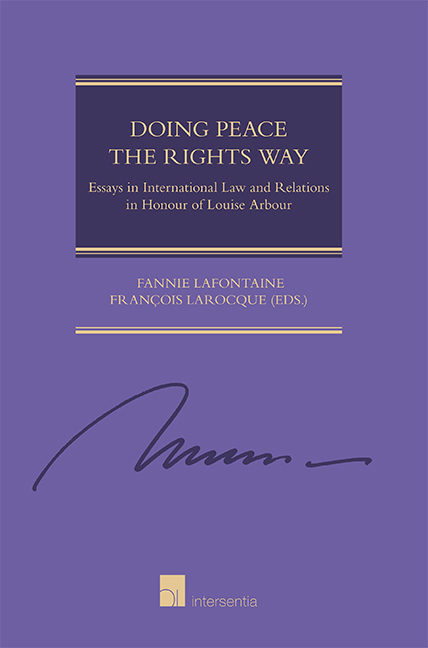Book contents
- Frontmatter
- Foreword
- Contents
- List of Contributors
- Introduction
- PART I OF FREEDOM AND EQUALITY
- Human Rights Obligations for Non-State Actors: Where Are We Now?
- The Right to Truth: When Does it Begin?
- Corruption, Inequality and Boko Haram in Nigeria
- Social and Economic Rights and the Legal Imagination
- Building a Culture of Inclusivity in a Diverse Society
- Made in Canada: A Failed War on Drugs
- Unaccompanied Children Out of Their Country of Origin: Trapped in the Administrative Net
- PART II OF PEACE AND JUSTICE
- PART III OF WOMEN AND LEADERSHIP
- An Interview with the Honourable Madam Justice Louise Arbour
Unaccompanied Children Out of Their Country of Origin: Trapped in the Administrative Net
from PART I - OF FREEDOM AND EQUALITY
Published online by Cambridge University Press: 13 April 2019
- Frontmatter
- Foreword
- Contents
- List of Contributors
- Introduction
- PART I OF FREEDOM AND EQUALITY
- Human Rights Obligations for Non-State Actors: Where Are We Now?
- The Right to Truth: When Does it Begin?
- Corruption, Inequality and Boko Haram in Nigeria
- Social and Economic Rights and the Legal Imagination
- Building a Culture of Inclusivity in a Diverse Society
- Made in Canada: A Failed War on Drugs
- Unaccompanied Children Out of Their Country of Origin: Trapped in the Administrative Net
- PART II OF PEACE AND JUSTICE
- PART III OF WOMEN AND LEADERSHIP
- An Interview with the Honourable Madam Justice Louise Arbour
Summary
Ten years have passed since the Convention on the Rights of the Child, the almost universally ratified international human rights treaty, came of age. The Convention constitutes the main and unchallenged normative standard on the rights of the child and their protection throughout the world. It applies to all children irrespective of their nationality or migration status. On that occasion, Louise Arbour, then United Nations High Commissioner for Human Rights, pointed out that the Convention had brought a global understanding that girls and boys are not the property of their parents or guardians, or objects of generosity or goodwill, but the subjects of rights, as are adults. Certainly, it has led to a major change in the way children should and must be treated, with rights and responsibilities appropriate to their age.
Similarly, there has been a marked change in access to information on the effective protection of children worldwide, and on the progress and challenges in ensuring absolute respect for the provisions of the Convention at the national level. The establishment and work of the Committee on the Rights of the Child, created with the entry into force of the treaty and which monitors the observance of the Convention by states parties, has played a critical role during the last almost 30 years. The Committee has unpacked the rights enshrined in the Convention through its general comments and has identified the precise actions required by states parties to guarantee those rights and to respond to the great challenges that are still faced in the effective protection of the human rights of children, in their capacity, as Arbour noted, as rights holders.
On the day the treaty turned 18, Arbour stated that it was essential to continue emphasizing the universality of human rights at the same time as the universal respect for the standards established in the Convention on the Rights of the Child. This premise resonates with particular emphasis and force today in the face of the events that we observe every day, with millions of migrants and refugees making their way to Europe crossing the Mediterranean, in the northern triangle of Central America and the seas of Asia – in short, around the entire planet in the context of large-scale movements that are mixed in character.
- Type
- Chapter
- Information
- Doing Peace the Rights WayEssays in International Law and Relations in Honour of Louise Arbour, pp. 121 - 144Publisher: IntersentiaPrint publication year: 2019



